This article is part of our MLB Barometer series.
We've somehow made it to the end of what I hope will be the strangest baseball season of my lifetime. Thank you all for reading throughout the year. It was quite comforting to be back in the familiar rhythms of the fantasy baseball community following months of uncertainty while we all waited to see whether or not the league would return at all.
For the final MLB Barometer of the season, I'll be repeating an exercise I performed at the end of last season. I'll go round-by-round (and later by groups of rounds) to examine which players rose or fell the most in our earned auction values compared to their NFBC ADP, using only drafts from the final month before the season. For the earned auction values, I've used standard NFBC settings (a 15-team roto league with the 10 typical categories), with 70 percent of the budget spent on hitters. If a player's fall was due to missing at least half the season to injury, I'll note that but discuss another player instead.
Feel free to brag in the comments about how many of these overperformers you managed to grab. If you managed to draft most of the underperformers and need a shoulder to cry on, I'm here for you as well.
ROUND 1
Riser: 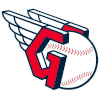 Jose Ramirez, 3B, Cleveland: It's hard to overperform when you're drafted in the first round. It's hard to even live up to expectations when you start from such a high point, though
Jose Ramirez, 3B, Cleveland: It's hard to overperform when you're drafted in the first round. It's hard to even live up to expectations when you start from such a high point, though
We've somehow made it to the end of what I hope will be the strangest baseball season of my lifetime. Thank you all for reading throughout the year. It was quite comforting to be back in the familiar rhythms of the fantasy baseball community following months of uncertainty while we all waited to see whether or not the league would return at all.
For the final MLB Barometer of the season, I'll be repeating an exercise I performed at the end of last season. I'll go round-by-round (and later by groups of rounds) to examine which players rose or fell the most in our earned auction values compared to their NFBC ADP, using only drafts from the final month before the season. For the earned auction values, I've used standard NFBC settings (a 15-team roto league with the 10 typical categories), with 70 percent of the budget spent on hitters. If a player's fall was due to missing at least half the season to injury, I'll note that but discuss another player instead.
Feel free to brag in the comments about how many of these overperformers you managed to grab. If you managed to draft most of the underperformers and need a shoulder to cry on, I'm here for you as well.
ROUND 1
Riser:  Jose Ramirez, 3B, Cleveland: It's hard to overperform when you're drafted in the first round. It's hard to even live up to expectations when you start from such a high point, though a respectable six of the top 15 picks this offseason finished as top-15 earners. Ramirez and Trea Turner were the only two players to finish higher than they were drafted, with JRam moving up six spots from 11th to fifth while Turner jumped from eighth to fourth. Ramirez has shown himself to be capable of almost anything over a 60-game stretch, but those who took a chance on him this year were certainly rewarded. He struck out a career-high 16.9 percent of the time, but it didn't seem to matter, as his wRC+ came in at a career-best 163, the product of a .292/.386/.607 slash line. He also homered 17 times and stole 10 bases, tying for third and 10th in those categories, respectively.
Jose Ramirez, 3B, Cleveland: It's hard to overperform when you're drafted in the first round. It's hard to even live up to expectations when you start from such a high point, though a respectable six of the top 15 picks this offseason finished as top-15 earners. Ramirez and Trea Turner were the only two players to finish higher than they were drafted, with JRam moving up six spots from 11th to fifth while Turner jumped from eighth to fourth. Ramirez has shown himself to be capable of almost anything over a 60-game stretch, but those who took a chance on him this year were certainly rewarded. He struck out a career-high 16.9 percent of the time, but it didn't seem to matter, as his wRC+ came in at a career-best 163, the product of a .292/.386/.607 slash line. He also homered 17 times and stole 10 bases, tying for third and 10th in those categories, respectively.
Faller:  Nolan Arenado, 3B, Rockies: The actual biggest faller in the first round was Justin Verlander (shout out to my TGFBI team), though there's not much to analyze there other than to acknowledge the risk inherent in drafting pitchers, particularly old ones. Among those who played most of the season, Arenado edges out Max Scherzer as the biggest disappointment, falling from the 14th pick to the 185th-highest earner. Injuries played a part in Arenado's .253/.303/.434 line as well, as he ended the season on the injured list with shoulder problems. It's not clear when exactly those issues first popped up, however, so it's hard to say quite to what extent we should write this year off entirely for Arenado and to what extent his struggles were the result of aging.
Nolan Arenado, 3B, Rockies: The actual biggest faller in the first round was Justin Verlander (shout out to my TGFBI team), though there's not much to analyze there other than to acknowledge the risk inherent in drafting pitchers, particularly old ones. Among those who played most of the season, Arenado edges out Max Scherzer as the biggest disappointment, falling from the 14th pick to the 185th-highest earner. Injuries played a part in Arenado's .253/.303/.434 line as well, as he ended the season on the injured list with shoulder problems. It's not clear when exactly those issues first popped up, however, so it's hard to say quite to what extent we should write this year off entirely for Arenado and to what extent his struggles were the result of aging.
ROUND 2
Risers:  Shane Bieber, SP, Cleveland: Fernando Tatis jumped up 15 spots from 18th to third and Freddie Freeman rose 19 spots from 25th to sixth, but Bieber edges out them both, improving by 20 spots and finishing as the second-highest earner overall after getting taken 22nd on average. Bieber was dominant last season, striking out 30.2 percent of batters and walking just 4.7 percent en route to a 3.28 ERA. Some thought that his penchant for giving up hard contact when opposing hitters did happen to touch the ball would cause him to fall quite a bit this season. While the contact he did give up remained fairly loud, he compensated by simply becoming even more unhittable, raising his strikeout rate from 30.2 percent to 41.1 percent while trimming his ERA from 3.28 to 1.63.
Shane Bieber, SP, Cleveland: Fernando Tatis jumped up 15 spots from 18th to third and Freddie Freeman rose 19 spots from 25th to sixth, but Bieber edges out them both, improving by 20 spots and finishing as the second-highest earner overall after getting taken 22nd on average. Bieber was dominant last season, striking out 30.2 percent of batters and walking just 4.7 percent en route to a 3.28 ERA. Some thought that his penchant for giving up hard contact when opposing hitters did happen to touch the ball would cause him to fall quite a bit this season. While the contact he did give up remained fairly loud, he compensated by simply becoming even more unhittable, raising his strikeout rate from 30.2 percent to 41.1 percent while trimming his ERA from 3.28 to 1.63.
Faller: 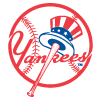 Gleyber Torres, 2B/SS, Yankees: There were quite a few significant disappointments in the second round beyond Stephen Strasburg, who made just two starts before being shut down for a hand injury that eventually required surgery. Among the players who remained healthy for most of the campaign, Alex Bregman, Walker Buehler, Mike Clevinger, Jack Flaherty and J.D. Martinez all fell by over 200 spots, but it was Torres who underperformed by the largest amount, dropping a full 399 places and finishing as the 427th-most valuable player. A hamstring injury did play a part, limiting him to 42 games, but he also fell far short of expectations when healthy. His .243/.356/.368 slash line was good for a 106 wRC+, an acceptable number for a shortstop but not what you want to see from someone who hit .278/.337/.535 (125 wRC+) last season. He did actually improve his plate discipline, raising his walk rate from 7.9 percent to 13.8 percent while cutting his strikeout rate from 21.4 percent to 17.5 percent, which is an encouraging sign for the future. He simply couldn't maintain the same level of contact, as his barrel rate plummeted from 10.1 percent to 3.7 percent while his xSLG fell from .501 to .374.
Gleyber Torres, 2B/SS, Yankees: There were quite a few significant disappointments in the second round beyond Stephen Strasburg, who made just two starts before being shut down for a hand injury that eventually required surgery. Among the players who remained healthy for most of the campaign, Alex Bregman, Walker Buehler, Mike Clevinger, Jack Flaherty and J.D. Martinez all fell by over 200 spots, but it was Torres who underperformed by the largest amount, dropping a full 399 places and finishing as the 427th-most valuable player. A hamstring injury did play a part, limiting him to 42 games, but he also fell far short of expectations when healthy. His .243/.356/.368 slash line was good for a 106 wRC+, an acceptable number for a shortstop but not what you want to see from someone who hit .278/.337/.535 (125 wRC+) last season. He did actually improve his plate discipline, raising his walk rate from 7.9 percent to 13.8 percent while cutting his strikeout rate from 21.4 percent to 17.5 percent, which is an encouraging sign for the future. He simply couldn't maintain the same level of contact, as his barrel rate plummeted from 10.1 percent to 3.7 percent while his xSLG fell from .501 to .374.
ROUND 3
Riser:  Xander Bogaerts, SS, Red Sox: It was quite difficult to find a player in the third round who beat expectations, as only Bogaerts and Clayton Kershaw did so, with Kershaw finishing just one spot above his ADP. Bogaerts finished as the 29th-highest earner, improving by 14 spots from his ADP. His .300/.364/.502 slash line was good for a 130 wRC+, which is actually his worst finish in that category since 2017 but is nevertheless quite strong for a shortstop. Perhaps most notably, he stole bases at a much higher clip than usual, swiping eight bags in 56 games. That equates to one steal every seven contests, beating his career best of one steal every 9.9 games set back in 2017 and smashing his one steal every 38.8 games from last year.
Xander Bogaerts, SS, Red Sox: It was quite difficult to find a player in the third round who beat expectations, as only Bogaerts and Clayton Kershaw did so, with Kershaw finishing just one spot above his ADP. Bogaerts finished as the 29th-highest earner, improving by 14 spots from his ADP. His .300/.364/.502 slash line was good for a 130 wRC+, which is actually his worst finish in that category since 2017 but is nevertheless quite strong for a shortstop. Perhaps most notably, he stole bases at a much higher clip than usual, swiping eight bags in 56 games. That equates to one steal every seven contests, beating his career best of one steal every 9.9 games set back in 2017 and smashing his one steal every 38.8 games from last year.
Faller: 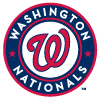 Patrick Corbin, SP, Nationals: Corbin beats out Charlie Morton as the most disappointing player in the third round. The 31-year-old lefty wasn't terrible, but his numbers fell off across the board, while the defending champions' overall struggles helped limit him to just two wins, taking another bite out of his fantasy value. His 4.66 ERA was mediocre at best, and even his 4.16 FIP represents a notable step back from his 3.25 ERA and 3.49 FIP from 2019. He actually improved his walk rate from 8.4 percent to 6.1 percent, but his strikeout rate collapsed from 28.5 percent to 20.3 percent. A decline in fastball velocity, which came in at 90.2 mph after averaging 91.9 mph last season, likely accounted for a good portion of his struggles, and it's unlikely he'll be able to reverse that decline as he heads deeper into his 30s.
Patrick Corbin, SP, Nationals: Corbin beats out Charlie Morton as the most disappointing player in the third round. The 31-year-old lefty wasn't terrible, but his numbers fell off across the board, while the defending champions' overall struggles helped limit him to just two wins, taking another bite out of his fantasy value. His 4.66 ERA was mediocre at best, and even his 4.16 FIP represents a notable step back from his 3.25 ERA and 3.49 FIP from 2019. He actually improved his walk rate from 8.4 percent to 6.1 percent, but his strikeout rate collapsed from 28.5 percent to 20.3 percent. A decline in fastball velocity, which came in at 90.2 mph after averaging 91.9 mph last season, likely accounted for a good portion of his struggles, and it's unlikely he'll be able to reverse that decline as he heads deeper into his 30s.
ROUND 4
Riser: 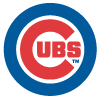 Yu Darvish, SP, Cubs: Darvish jumped up by 38 spots to finish as the 12th-highest earner, suggesting he should have been a late first-round pick. He edges out Whit Merrifield, who jumped up 35 spots. Drafters evidently didn't fully buy into Darvish's dominant second half last year, in which he posted a 38.5 percent strikeout rate and a 2.6 percent walk rate en route to a 2.76 ERA. He couldn't quite keep up that incredible level of dominance in the underlying numbers, but he came quite close, finishing this season with a 31.3 percent strikeout rate and a 4.7 percent walk rate. Thanks to some improved HR/FB luck, he cruised to an even better 2.01 ERA, finishing fourth in the league in that category. Whether fantasy players will fully buy in this time around now that he's maintained this level for nearly a full year's worth of starts, or expect a significant decline in his age-34 campaign, will be quite interesting to watch.
Yu Darvish, SP, Cubs: Darvish jumped up by 38 spots to finish as the 12th-highest earner, suggesting he should have been a late first-round pick. He edges out Whit Merrifield, who jumped up 35 spots. Drafters evidently didn't fully buy into Darvish's dominant second half last year, in which he posted a 38.5 percent strikeout rate and a 2.6 percent walk rate en route to a 2.76 ERA. He couldn't quite keep up that incredible level of dominance in the underlying numbers, but he came quite close, finishing this season with a 31.3 percent strikeout rate and a 4.7 percent walk rate. Thanks to some improved HR/FB luck, he cruised to an even better 2.01 ERA, finishing fourth in the league in that category. Whether fantasy players will fully buy in this time around now that he's maintained this level for nearly a full year's worth of starts, or expect a significant decline in his age-34 campaign, will be quite interesting to watch.
Faller:  Austin Meadows, OF, Rays: Kirby Yates was technically the biggest faller in the fourth round, but that's because he made just six appearances before landing on the injured list with elbow issues. Injuries played a role in Meadows' season as well, but he appeared in 36 games, meeting my arbitrary cutoff for this piece, and wound up dropping over 400 spots to finish as the 474th-best player. (Among fully healthy fourth-rounders, Chris Paddack and his disappointing 4.73 ERA take the title.) Meadows missed the start of the season due to COVID-19 and the end due to a strained oblique, and he didn't look right in between. After breaking out to the tune of a .291/.364/.558 line last season, he hit just .205/.296/.371 this year, homering just four times in 36 games. He actually hit the ball just as hard as last season, but he seemingly hit it far too high. His average launch angle jumped from 16.7 degrees to 24.2 degrees, dropping his barrel rate from 12.5 percent to 7.1 percent. He also made contact far less often, as his strikeout rate jumped from 22.2 percent to 32.9 percent.
Austin Meadows, OF, Rays: Kirby Yates was technically the biggest faller in the fourth round, but that's because he made just six appearances before landing on the injured list with elbow issues. Injuries played a role in Meadows' season as well, but he appeared in 36 games, meeting my arbitrary cutoff for this piece, and wound up dropping over 400 spots to finish as the 474th-best player. (Among fully healthy fourth-rounders, Chris Paddack and his disappointing 4.73 ERA take the title.) Meadows missed the start of the season due to COVID-19 and the end due to a strained oblique, and he didn't look right in between. After breaking out to the tune of a .291/.364/.558 line last season, he hit just .205/.296/.371 this year, homering just four times in 36 games. He actually hit the ball just as hard as last season, but he seemingly hit it far too high. His average launch angle jumped from 16.7 degrees to 24.2 degrees, dropping his barrel rate from 12.5 percent to 7.1 percent. He also made contact far less often, as his strikeout rate jumped from 22.2 percent to 32.9 percent.
ROUND 5
Riser:  Trevor Bauer, SP, Reds: Manny Machado and DJ LeMahieu both jumped up over 50 spots, but Bauer was the biggest mover this round, jumping up 64 spots from 75th to 11th. He was difficult to evaluate prior to the campaign, as his 4.48 ERA last year was thoroughly mediocre and represented a large step back from his 2.21 ERA from 2018, with a decline across the board in his peripherals accounting for most of the giveback. He recaptured all of his 2018 dominance and more this year, posting career bests in strikeout rate (36.0 percent) and walk rate (6.1 percent), leading to another career best in ERA (1.73). There are some minor red flags here, as his 34.4 percent groundball rate represents a career low while he lost over one mph on his fastball, but the overall picture is quite encouraging.
Trevor Bauer, SP, Reds: Manny Machado and DJ LeMahieu both jumped up over 50 spots, but Bauer was the biggest mover this round, jumping up 64 spots from 75th to 11th. He was difficult to evaluate prior to the campaign, as his 4.48 ERA last year was thoroughly mediocre and represented a large step back from his 2.21 ERA from 2018, with a decline across the board in his peripherals accounting for most of the giveback. He recaptured all of his 2018 dominance and more this year, posting career bests in strikeout rate (36.0 percent) and walk rate (6.1 percent), leading to another career best in ERA (1.73). There are some minor red flags here, as his 34.4 percent groundball rate represents a career low while he lost over one mph on his fastball, but the overall picture is quite encouraging.
Faller:  Kris Bryant, 3B/OF, Cubs: Injuries limited Bryant to only 34 games this season, but that's just enough for him to qualify for this list. (For a healthier underperformer, Victor Robles and his .220/.293/.315 line with four steals wins this group.) Bryant battled finger, wrist and oblique issues this season and didn't look good when in the lineup. He finished the year with a .206/.293/.351 line, adding just four homers and 11 RBI as he fell 474 spots to finish as the 535th-best player. Half of those homers and more than half of those RBI came in the final game of the season. Bryant will certainly hope that his nagging injuries account for the entirety of his struggles, as it doesn't look like he can blame luck. Statcast definitely didn't like his quality of contact, as his barrel rate fell from 9.3 percent to 5.5 percent while his xSLG fell from .469 to .348. He also made considerably less contact than usual, as his strikeout rate jumped from 22.9 percent to 27.2 percent.
Kris Bryant, 3B/OF, Cubs: Injuries limited Bryant to only 34 games this season, but that's just enough for him to qualify for this list. (For a healthier underperformer, Victor Robles and his .220/.293/.315 line with four steals wins this group.) Bryant battled finger, wrist and oblique issues this season and didn't look good when in the lineup. He finished the year with a .206/.293/.351 line, adding just four homers and 11 RBI as he fell 474 spots to finish as the 535th-best player. Half of those homers and more than half of those RBI came in the final game of the season. Bryant will certainly hope that his nagging injuries account for the entirety of his struggles, as it doesn't look like he can blame luck. Statcast definitely didn't like his quality of contact, as his barrel rate fell from 9.3 percent to 5.5 percent while his xSLG fell from .469 to .348. He also made considerably less contact than usual, as his strikeout rate jumped from 22.9 percent to 27.2 percent.
ROUNDS 6-7
Riser:  Marcell Ozuna, OF, Atlanta: There were plenty of excellent picks in these rounds, with the highest-earning player Jose Abreu as well as Eddie Rosario, Tim Anderson and Lance Lynn all jumping up more than 50 spots, but Ozuna made the biggest leap, finishing seventh after being taken 99th on average. The outfielder had settled in as a good but not great hitter in recent seasons, posting a wRC+ between 107 and 109 in three of the last four years. He had a career year this year, however, as his .338/.431/.636 slash line was good for a 179 wRC+, the third-best mark among qualified hitters. He also finished third with 18 homers. Statcast buys into his performance, as his .638 xSLG suggests he didn't overachieve at all. It's possible that playing the majority of his games as a designated hitter for the first time helped his numbers, so his 2021 landing spot could have a meaningful effect on his value heading into next year.
Marcell Ozuna, OF, Atlanta: There were plenty of excellent picks in these rounds, with the highest-earning player Jose Abreu as well as Eddie Rosario, Tim Anderson and Lance Lynn all jumping up more than 50 spots, but Ozuna made the biggest leap, finishing seventh after being taken 99th on average. The outfielder had settled in as a good but not great hitter in recent seasons, posting a wRC+ between 107 and 109 in three of the last four years. He had a career year this year, however, as his .338/.431/.636 slash line was good for a 179 wRC+, the third-best mark among qualified hitters. He also finished third with 18 homers. Statcast buys into his performance, as his .638 xSLG suggests he didn't overachieve at all. It's possible that playing the majority of his games as a designated hitter for the first time helped his numbers, so his 2021 landing spot could have a meaningful effect on his value heading into next year.
Faller: 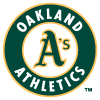 Frankie Montas, SP, Athletics: It wasn't easy to avoid injury landmines in these rounds, with Yordan Alvarez, Ken Giles, Corey Kluber and Roberto Osuna and James Paxton all failing to make a meaningful impact. Montas made 11 starts but still fell by well over 500 spots, finishing as the 656th-highest earner and a significantly negative value in 15-team leagues. His ERA more than doubled from 2.63 to 5.60, while his WHIP spiked from 1.11 to 1.51. The one positive sign here is that his strikeout rate dropped negligibly from 26.1 percent to 25.3 percent, but on the other hand his walk rate jumped from 5.8 percent to 9.7 percent while his groundball rate fell all the way from 49.4 percent to 36.8 percent. He went from an all-around above-average arm to one who gets a decent number of strikeouts but doesn't do a whole lot else well. For what it's worth, his first four starts and final outing were all quite good, but he was held back by an awful six-start stretch in the middle of the campaign in which he struggled to a 10.88 ERA and a 2.13 WHIP.
Frankie Montas, SP, Athletics: It wasn't easy to avoid injury landmines in these rounds, with Yordan Alvarez, Ken Giles, Corey Kluber and Roberto Osuna and James Paxton all failing to make a meaningful impact. Montas made 11 starts but still fell by well over 500 spots, finishing as the 656th-highest earner and a significantly negative value in 15-team leagues. His ERA more than doubled from 2.63 to 5.60, while his WHIP spiked from 1.11 to 1.51. The one positive sign here is that his strikeout rate dropped negligibly from 26.1 percent to 25.3 percent, but on the other hand his walk rate jumped from 5.8 percent to 9.7 percent while his groundball rate fell all the way from 49.4 percent to 36.8 percent. He went from an all-around above-average arm to one who gets a decent number of strikeouts but doesn't do a whole lot else well. For what it's worth, his first four starts and final outing were all quite good, but he was held back by an awful six-start stretch in the middle of the campaign in which he struggled to a 10.88 ERA and a 2.13 WHIP.
ROUNDS 8-10
Riser: 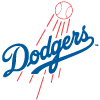 Corey Seager, SS, Dodgers and
Corey Seager, SS, Dodgers and  Kenta Maeda, Twins: This pair of former teammates was taken on average with the first two picks of the 10th round, but evidently they should have been taken with the first two picks of the second, as they finished 16th and 17th respectively. Seager perhaps suffered from a bit of boredom on the part of fantasy players, as he carried a strong .294/.362/.491 slash line into the season with an average of 22.4 homers per 150 games, but that wasn't enough to make him stand out among a group of even higher-performing shortstops. As it turns out, talented players who are still just 26 years old still have room to improve. He produced an excellent .307/.358/.585 slash line on the season while hitting 15 homers in 52 games, the equivalent of 43.3 homers over 150 contests. Per Statcast, his improved performance came as an unsurprising result of the fact that he simply hit the ball far harder than ever before, as his 15.8 percent barrel rate more than doubled his 7.3 percent mark from last season, leading to a .653 xSLG, a number that suggests he actually underachieved by a fair amount.
Kenta Maeda, Twins: This pair of former teammates was taken on average with the first two picks of the 10th round, but evidently they should have been taken with the first two picks of the second, as they finished 16th and 17th respectively. Seager perhaps suffered from a bit of boredom on the part of fantasy players, as he carried a strong .294/.362/.491 slash line into the season with an average of 22.4 homers per 150 games, but that wasn't enough to make him stand out among a group of even higher-performing shortstops. As it turns out, talented players who are still just 26 years old still have room to improve. He produced an excellent .307/.358/.585 slash line on the season while hitting 15 homers in 52 games, the equivalent of 43.3 homers over 150 contests. Per Statcast, his improved performance came as an unsurprising result of the fact that he simply hit the ball far harder than ever before, as his 15.8 percent barrel rate more than doubled his 7.3 percent mark from last season, leading to a .653 xSLG, a number that suggests he actually underachieved by a fair amount.
Former Dodger hurler Maeda was finally given another chance to be an unquestioned member of a starting rotation, security he hadn't had since his first season stateside back in 2016, and he thrived in the role. He produced career bests in strikeout rate (32.3 percent), walk rate (4.0 percent) and groundball rate (49.0 percent). That overall dominance unsurprisingly led to a career-best 2.70 ERA. Notably, cut his already low fastball usage down from 37.4 percent to 25.9 percent, with increased slider and changeup usage filling the gap. The fastball was actually his third most used pitch, with his slider, which he threw 39.9 percent of the time, leading the way.
Faller:  Robbie Ray, SP, Blue Jays: These rounds were marked by several major disappointments, with Shohei Ohtani, Madison Bumgarner and Hansel Robles standing out among the most notable ones, but it was Ray who was the worst of all. The earned auction value calculator suggests that if you spent negative $20 of a $260 budget on Ray, you were still taking a loss. 2020 was an absolute disaster for the lefty, someone I was quite high on heading into the year. His 27.1 percent strikeout rate, while strong, still represented his worst mark since 2015. Both his 17.9 percent walk rate and 24.3 percent groundball rate were untenably bad, each coming in more than four percentage points worse than the next-worst pitcher who threw at least 50 innings. If it's any consolation, his 4.79 ERA with the Blue Jays was at least better than his 7.84 mark with the Diamondbacks, but his 14.4 percent walk rate and 31.0 percent groundball rate for his new team both still would have been career-worst marks.
Robbie Ray, SP, Blue Jays: These rounds were marked by several major disappointments, with Shohei Ohtani, Madison Bumgarner and Hansel Robles standing out among the most notable ones, but it was Ray who was the worst of all. The earned auction value calculator suggests that if you spent negative $20 of a $260 budget on Ray, you were still taking a loss. 2020 was an absolute disaster for the lefty, someone I was quite high on heading into the year. His 27.1 percent strikeout rate, while strong, still represented his worst mark since 2015. Both his 17.9 percent walk rate and 24.3 percent groundball rate were untenably bad, each coming in more than four percentage points worse than the next-worst pitcher who threw at least 50 innings. If it's any consolation, his 4.79 ERA with the Blue Jays was at least better than his 7.84 mark with the Diamondbacks, but his 14.4 percent walk rate and 31.0 percent groundball rate for his new team both still would have been career-worst marks.
ROUNDS 11-15
Riser:  Didi Gregorius, SS, Phillies: Gregorius edges out Brandon Lowe and former teammate Luke Voit, who both jumped up by 172 spots, by moving up 182 spots to finish 37th overall, suggesting he should have been picked in the middle of the third round. It's quite understandable why no one had him going that high, as he hadn't been quite that caliber of player even in his best seasons and was coming off quite a poor 2019 campaign. It seems quite clear now that the Tommy John surgery which caused him to miss the first half of last year accounted for nearly all of his struggles, however, as he bounced back from a .238/.276/.441 season to hit .284/.339/.488. Moving from one short porch to another clearly didn't hurt him, as his 10 homers in 60 games this season were good for one every six games, in line with the one homer every 5.7 games that he managed in his last four years as a Yankee.
Didi Gregorius, SS, Phillies: Gregorius edges out Brandon Lowe and former teammate Luke Voit, who both jumped up by 172 spots, by moving up 182 spots to finish 37th overall, suggesting he should have been picked in the middle of the third round. It's quite understandable why no one had him going that high, as he hadn't been quite that caliber of player even in his best seasons and was coming off quite a poor 2019 campaign. It seems quite clear now that the Tommy John surgery which caused him to miss the first half of last year accounted for nearly all of his struggles, however, as he bounced back from a .238/.276/.441 season to hit .284/.339/.488. Moving from one short porch to another clearly didn't hurt him, as his 10 homers in 60 games this season were good for one every six games, in line with the one homer every 5.7 games that he managed in his last four years as a Yankee.
Fallers:  Ian Kennedy, RP, Royals: These rounds were full of significant underperformers, particularly among the pitchers, but Kennedy was the worst of the group that remained healthy for at least half the year. (He did miss nearly a month, however, so Luke Weaver takes this title if you'd rather exclude Kennedy.) Manager Mike Matheny said before the season that the Royals wouldn't use a traditional closer, but there was evidently at least one drafter in every league who didn't believe him, judging by Kennedy's draft position. As it turns out, Matheny did prefer using a traditional closer -- it just wasn't Kennedy, who didn't record a single one of the Royals' 19 saves. Trevor Rosenthal grabbed seven before a midseason trade to the Padres and Greg Holland picked up six, all but one coming after Rosenthal's departure. Kennedy simply doesn't do enough under ordinary circumstances to have much value as a middle reliever, but that was especially true this season, as he allowed 14 earned runs in 14 innings before missing most of the second half of the year with a strained calf.
Ian Kennedy, RP, Royals: These rounds were full of significant underperformers, particularly among the pitchers, but Kennedy was the worst of the group that remained healthy for at least half the year. (He did miss nearly a month, however, so Luke Weaver takes this title if you'd rather exclude Kennedy.) Manager Mike Matheny said before the season that the Royals wouldn't use a traditional closer, but there was evidently at least one drafter in every league who didn't believe him, judging by Kennedy's draft position. As it turns out, Matheny did prefer using a traditional closer -- it just wasn't Kennedy, who didn't record a single one of the Royals' 19 saves. Trevor Rosenthal grabbed seven before a midseason trade to the Padres and Greg Holland picked up six, all but one coming after Rosenthal's departure. Kennedy simply doesn't do enough under ordinary circumstances to have much value as a middle reliever, but that was especially true this season, as he allowed 14 earned runs in 14 innings before missing most of the second half of the year with a strained calf.
ROUNDS 16-20
Riser:  A.J. Pollock, OF, Dodgers: Corbin Burnes, Randal Grichuk, Trent Grisham, Wil Myers and Dansby Swanson all finished more than 200 spots above their ADP ranking, but Pollock was the best bargain in these rounds, improving by more than 253 places to finish 40th overall. Pollock's talent wasn't in any doubt, but his injury history and expected role within a crowded Dodgers' lineup suppressed his draft stock. As it turns out, he never suffered more than a day-to-day injury and found himself in the lineup in 47 out of 60 games. He thrived with regular playing time, slashing .276/.314/.566 and smashing his previous career high in SLG by 68 points. He also hit 16 homers in 55 games, giving him 31 in 141 games over the last two years. Injury and role questions won't go away for him this offseason, however, so just how high he'll be drafted heading into his age-33 campaign will be interesting to watch.
A.J. Pollock, OF, Dodgers: Corbin Burnes, Randal Grichuk, Trent Grisham, Wil Myers and Dansby Swanson all finished more than 200 spots above their ADP ranking, but Pollock was the best bargain in these rounds, improving by more than 253 places to finish 40th overall. Pollock's talent wasn't in any doubt, but his injury history and expected role within a crowded Dodgers' lineup suppressed his draft stock. As it turns out, he never suffered more than a day-to-day injury and found himself in the lineup in 47 out of 60 games. He thrived with regular playing time, slashing .276/.314/.566 and smashing his previous career high in SLG by 68 points. He also hit 16 homers in 55 games, giving him 31 in 141 games over the last two years. Injury and role questions won't go away for him this offseason, however, so just how high he'll be drafted heading into his age-33 campaign will be interesting to watch.
Faller: 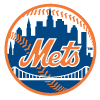 Steven Matz, SP, Mets: These rounds were full of players who didn't play at all, and not always for health reasons. Yasiel Puig (unsigned), Marcus Stroman (opt out) and MacKenzie Gore (never called up) joined several players who missed most of the season due to injury. Matz missed a bit of time himself due to shoulder woes but made enough appearances to qualify for this list. His six starts and three relief outings went quite poorly, as he struggled to a 9.68 ERA. His 4.09 xFIP tells an entirely different story, however. Nearly every indicator of future positive regression is lighting up in Matz's small sample, such as his .341 BABIP, his 58.6 percent strand rate or his 38.9 percent HR/FB rate. His 25.4 percent strikeout rate and 7.0 percent walk rate were both quite good, though he did see his groundball rate fall from 47.1 percent all the way down to 32.6 percent. It's also worth noting that you could also give the title in this section to Joey Lucchesi, who was seemingly healthy all year yet made just three appearances as the Padres strengthened their staff to the point where they apparently didn't need him.
Steven Matz, SP, Mets: These rounds were full of players who didn't play at all, and not always for health reasons. Yasiel Puig (unsigned), Marcus Stroman (opt out) and MacKenzie Gore (never called up) joined several players who missed most of the season due to injury. Matz missed a bit of time himself due to shoulder woes but made enough appearances to qualify for this list. His six starts and three relief outings went quite poorly, as he struggled to a 9.68 ERA. His 4.09 xFIP tells an entirely different story, however. Nearly every indicator of future positive regression is lighting up in Matz's small sample, such as his .341 BABIP, his 58.6 percent strand rate or his 38.9 percent HR/FB rate. His 25.4 percent strikeout rate and 7.0 percent walk rate were both quite good, though he did see his groundball rate fall from 47.1 percent all the way down to 32.6 percent. It's also worth noting that you could also give the title in this section to Joey Lucchesi, who was seemingly healthy all year yet made just three appearances as the Padres strengthened their staff to the point where they apparently didn't need him.
ROUNDS 21-25
Riser:  Teoscar Hernandez, OF, Blue Jays: Zach Plesac jumped up 301 spots and Kole Calhoun improved by 302, but Hernandez edges out them both, finishing 18th overall, 303 spots ahead of his ADP ranking of 321. The 27-year-old carried a passable but unexciting .237/.304/.476 career slash line heading into the season, demonstrating good power but striking out 31.8 percent of the time, suppressing his batting average. He barely improved on that strikeout rate this year, finishing with a 30.4 percent mark, but he nevertheless improved his line to .289/.340/.579. He simply hit the ball far harder than ever before, as his 18.0 percent barrel rate, 93.3 mph exit velocity and 53.1 percent hard-hit rate were all easily career highs. His .613 xSLG suggests he may have even slightly underachieved. The high number of whiffs means he'll need to keep hitting the ball that hard to maintain those numbers, but if he's done it over 50 games, he could conceivably do it over a full season next year.
Teoscar Hernandez, OF, Blue Jays: Zach Plesac jumped up 301 spots and Kole Calhoun improved by 302, but Hernandez edges out them both, finishing 18th overall, 303 spots ahead of his ADP ranking of 321. The 27-year-old carried a passable but unexciting .237/.304/.476 career slash line heading into the season, demonstrating good power but striking out 31.8 percent of the time, suppressing his batting average. He barely improved on that strikeout rate this year, finishing with a 30.4 percent mark, but he nevertheless improved his line to .289/.340/.579. He simply hit the ball far harder than ever before, as his 18.0 percent barrel rate, 93.3 mph exit velocity and 53.1 percent hard-hit rate were all easily career highs. His .613 xSLG suggests he may have even slightly underachieved. The high number of whiffs means he'll need to keep hitting the ball that hard to maintain those numbers, but if he's done it over 50 games, he could conceivably do it over a full season next year.
Faller: From this point on, I'll be skipping the Faller section. Most players in the final 10 rounds or so are low-floor lottery tickets, and it's not particularly worthwhile to break down exactly whose floor wound up being the lowest.
ROUNDS 26-30
Riser:  Zach Davies, SP, Padres: Maikel Franco, Jackie Bradley, Marco Gonzales and Kevin Pillar all improved on their draft position by more than 300 spots, but Davies bested them all, jumping up 375 spots to finish as the 57th-highest earner. After posting a 3.91 ERA in his first five seasons, all as a Brewer, he cruised to a 2.73 mark in his first year as a Padre. While his underlying numbers did improve, his 3.88 FIP and 4.14 xFIP were considerably less impressive, so it's probably unwise to push him too far up draft boards this winter. That said, he did manage a nearly league-average 22.8 percent strikeout rate, significantly better than his 16.8 percent mark in Milwaukee. A control artist who strikes out batters at only a slightly below-average rate is a lot more interesting than someone with Davies' previous numbers, who was almost guaranteed to be a liability in the strikeout category.
Zach Davies, SP, Padres: Maikel Franco, Jackie Bradley, Marco Gonzales and Kevin Pillar all improved on their draft position by more than 300 spots, but Davies bested them all, jumping up 375 spots to finish as the 57th-highest earner. After posting a 3.91 ERA in his first five seasons, all as a Brewer, he cruised to a 2.73 mark in his first year as a Padre. While his underlying numbers did improve, his 3.88 FIP and 4.14 xFIP were considerably less impressive, so it's probably unwise to push him too far up draft boards this winter. That said, he did manage a nearly league-average 22.8 percent strikeout rate, significantly better than his 16.8 percent mark in Milwaukee. A control artist who strikes out batters at only a slightly below-average rate is a lot more interesting than someone with Davies' previous numbers, who was almost guaranteed to be a liability in the strikeout category.
After Round 30
Riser: 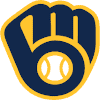 Devin Williams, RP, Brewers: It's no surprise to see a Brewers reliever as the third-highest earner at the position, though it's quite a surprise that it was Williams, not Josh Hader, who claimed that spot. Williams wasn't drafted once this past season, yet he finished the year as the 82nd most valuable player. It's hardly a surprise that he flew under the radar, as he entered the year with a fine but unremarkable 3.95 ERA in just 13.2 innings at the big-league level. This season, he threw 27 innings over 22 appearances, allowing a single earned run back in his second outing of the year. His 53.0 percent strikeout rate was an absurd mark, beating even Hader's career best by more than five points. He also generated a 61.1 percent groundball rate while walking a passable 9.0 percent of opposing batters. His 0.86 FIP and 1.09 xFIP suggest his 0.33 ERA barely counted as overachieving.
Devin Williams, RP, Brewers: It's no surprise to see a Brewers reliever as the third-highest earner at the position, though it's quite a surprise that it was Williams, not Josh Hader, who claimed that spot. Williams wasn't drafted once this past season, yet he finished the year as the 82nd most valuable player. It's hardly a surprise that he flew under the radar, as he entered the year with a fine but unremarkable 3.95 ERA in just 13.2 innings at the big-league level. This season, he threw 27 innings over 22 appearances, allowing a single earned run back in his second outing of the year. His 53.0 percent strikeout rate was an absurd mark, beating even Hader's career best by more than five points. He also generated a 61.1 percent groundball rate while walking a passable 9.0 percent of opposing batters. His 0.86 FIP and 1.09 xFIP suggest his 0.33 ERA barely counted as overachieving.










